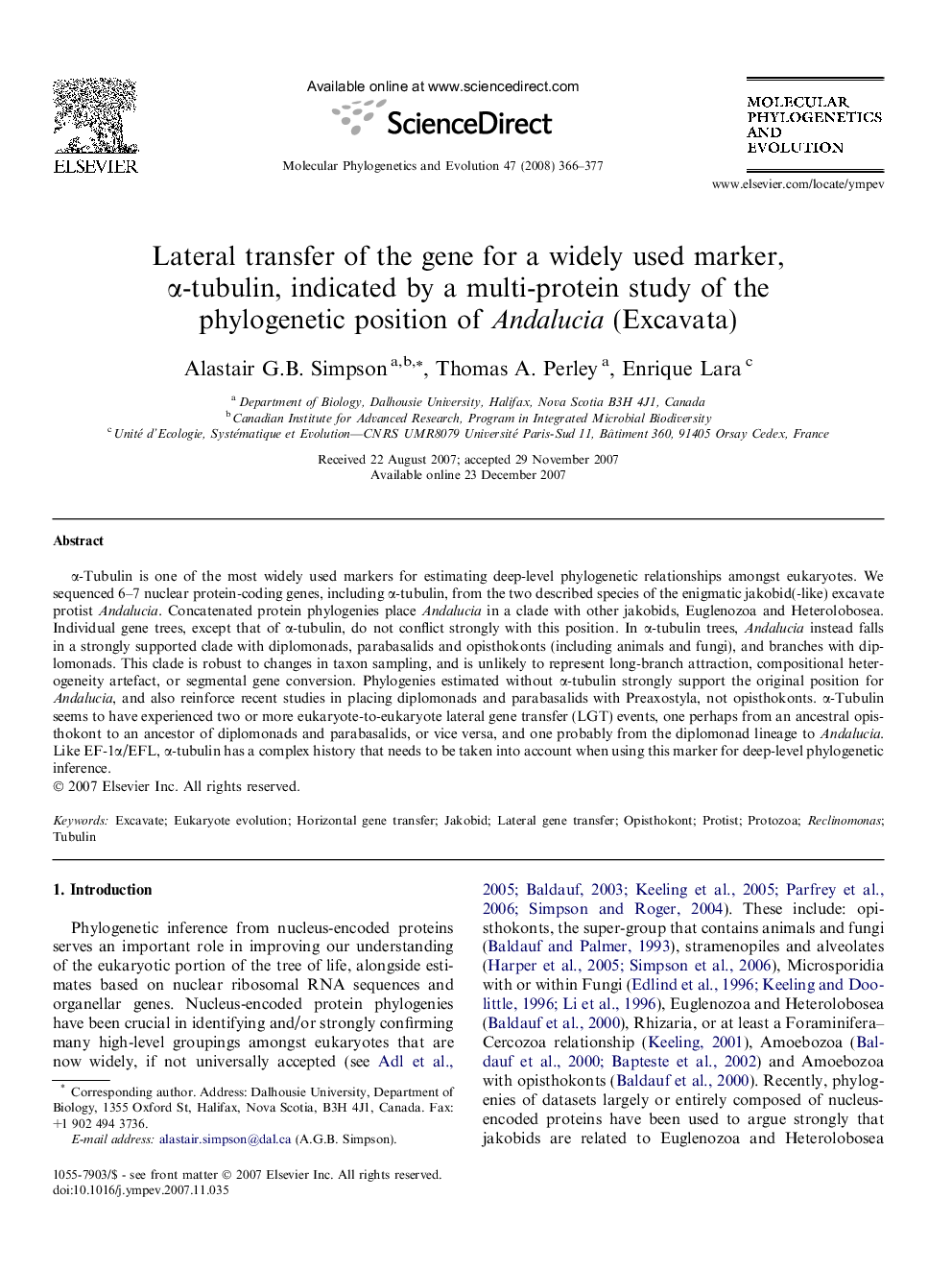| Article ID | Journal | Published Year | Pages | File Type |
|---|---|---|---|---|
| 2835251 | Molecular Phylogenetics and Evolution | 2008 | 12 Pages |
Abstract
α-Tubulin is one of the most widely used markers for estimating deep-level phylogenetic relationships amongst eukaryotes. We sequenced 6-7 nuclear protein-coding genes, including α-tubulin, from the two described species of the enigmatic jakobid(-like) excavate protist Andalucia. Concatenated protein phylogenies place Andalucia in a clade with other jakobids, Euglenozoa and Heterolobosea. Individual gene trees, except that of α-tubulin, do not conflict strongly with this position. In α-tubulin trees, Andalucia instead falls in a strongly supported clade with diplomonads, parabasalids and opisthokonts (including animals and fungi), and branches with diplomonads. This clade is robust to changes in taxon sampling, and is unlikely to represent long-branch attraction, compositional heterogeneity artefact, or segmental gene conversion. Phylogenies estimated without α-tubulin strongly support the original position for Andalucia, and also reinforce recent studies in placing diplomonads and parabasalids with Preaxostyla, not opisthokonts. α-Tubulin seems to have experienced two or more eukaryote-to-eukaryote lateral gene transfer (LGT) events, one perhaps from an ancestral opisthokont to an ancestor of diplomonads and parabasalids, or vice versa, and one probably from the diplomonad lineage to Andalucia. Like EF-1α/EFL, α-tubulin has a complex history that needs to be taken into account when using this marker for deep-level phylogenetic inference.
Related Topics
Life Sciences
Agricultural and Biological Sciences
Ecology, Evolution, Behavior and Systematics
Authors
Alastair G.B. Simpson, Thomas A. Perley, Enrique Lara,
